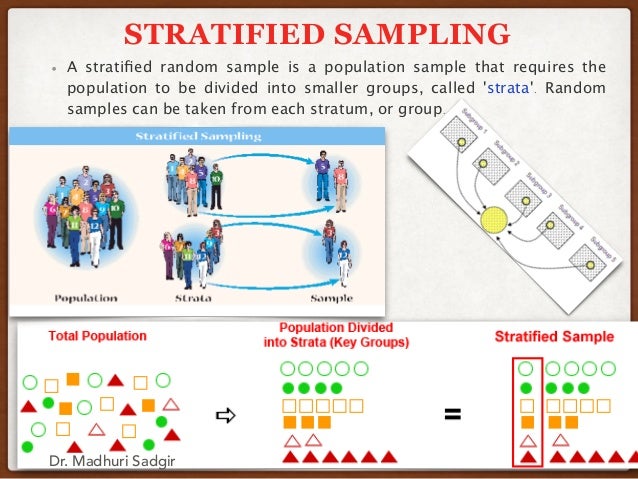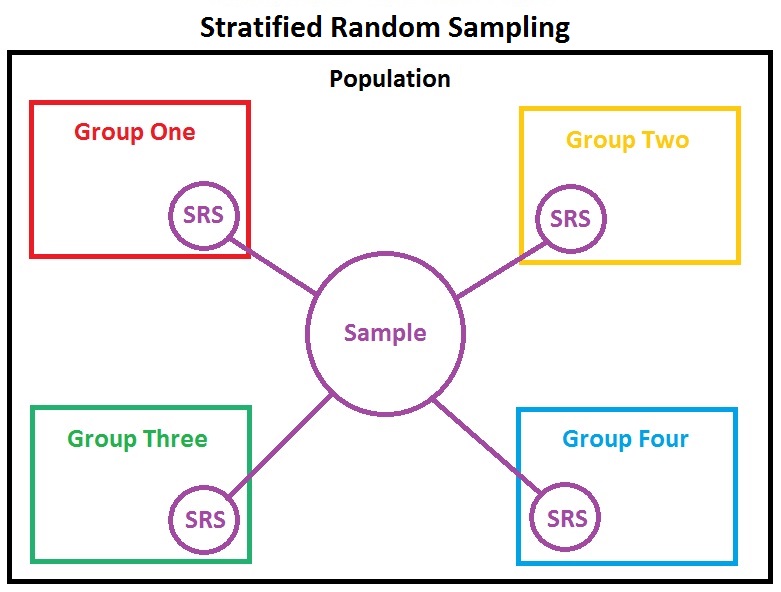Do you desperately look for 'stratified random assignment'? Here you can find questions and answers about the issue.
Sheetlike samplingIn statistics, layered sampling is A method of sample from a universe. In statistical surveys, when subpopulations inside an overall universe vary, it is advantageous to sample distribution each subpopulation (stratum) independently. Stratification is the process of dividing members of the population into homogen… randomization is achieved by generating a separate auction block for each combining of covariates, and subjects are appointed to the expedient block of covariates. After all subjects have been known and assigned into blocks, simple randomisation is performed inside each block to assign subjects to one of the groups.Author: KP SureshCited by: Publish Year: 2011
Table of contents
- Stratified random assignment in 2021
- Stratified random sampling pdf
- Stratified random sampling example situation
- Stratified random sampling formula pdf
- Types of stratified random sampling
- Random selection and random assignment
- Advantages of stratified random sampling
- Explain stratified sampling
Stratified random assignment in 2021
 This image illustrates stratified random assignment.
This image illustrates stratified random assignment.
Stratified random sampling pdf
 This picture demonstrates Stratified random sampling pdf.
This picture demonstrates Stratified random sampling pdf.
Stratified random sampling example situation
 This picture demonstrates Stratified random sampling example situation.
This picture demonstrates Stratified random sampling example situation.
Stratified random sampling formula pdf
 This picture shows Stratified random sampling formula pdf.
This picture shows Stratified random sampling formula pdf.
Types of stratified random sampling
 This picture shows Types of stratified random sampling.
This picture shows Types of stratified random sampling.
Random selection and random assignment
 This picture representes Random selection and random assignment.
This picture representes Random selection and random assignment.
Advantages of stratified random sampling
 This picture shows Advantages of stratified random sampling.
This picture shows Advantages of stratified random sampling.
Explain stratified sampling
 This image illustrates Explain stratified sampling.
This image illustrates Explain stratified sampling.
What do you need to know about stratified random sampling?
Key Takeaways Stratified random sampling allows researchers to obtain a sample population that best represents the entire population being studied. Stratified random sampling involves dividing the entire population into homogeneous groups called strata.
When to use restricted randomization or simple randomization?
Simple randomization will usually not be able to achieve the exact balance of the treatment assignments if the # of randomized subjects are small. In contrary, the restricted randomization refer to any procedure used with random assignment to achieve balance between study groups in size or baseline characteristics.
How is error margin determined in stratified randomization?
If two or more elements from each stratum are selected, error margins of the collected data can be calculated. Stratified randomization decides one or multiple prognostic factors to make subgroups, on average, have similar entry characteristics. The patient factor can be accurately decided by examining the outcome in previous studies.
How is stratified randomization used in Computer Science?
Stratified randomization is achieved by generating a separate block for each combination of covariates, and subjects are assigned to the appropriate block of covariates. After all subjects have been identified and assigned into blocks, simple randomization is performed within each block to assign subjects to one of the groups.
Last Update: Oct 2021